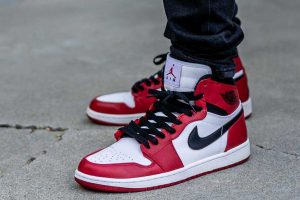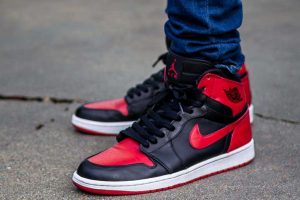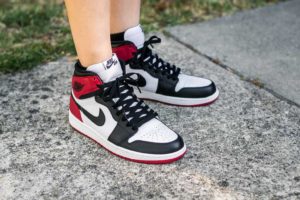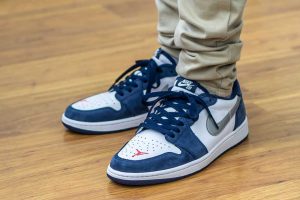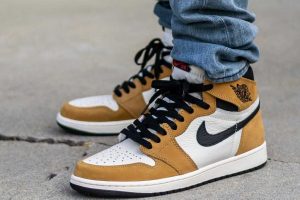
2022 has delivered some stylish, chunktastic running shoes with New Balance right in the middle of the fray. This summer we reviewed the ultra bouncy and massively cushioned New Balance FuelCell SuperComp Trainer, and we loved it. So, when the New Balance Fresh Foam X More v4 landed at our door, we were ready for more chunky running and cautiously optimistic about its performance.
Last year’s Fresh Foam X More v3 made our Best New Balance Running Shoes and Best Running Shoes for Wide Feet lists because it was a beefy, cushioned runner that delivered comfort across miles and miles of easy running. Can the New Balance Fresh Foam X More v4 deliver more of the same?
New Balance Fresh Foam X More v4
Release Date: September 2022
Price: $150
Weight: M 10.4oz, W 8.4oz
Drop: 4mm (30mm forefoot, 34mm heel)
Sizing: True to Size
- Rundown: The New Balance Fresh Foam X More v4 is a stylish, affordable shoe with great cushioning alongside industry-leading stability and fit.
Pros
- Fresh Foam X
- Accommodating Fit
- Stability
- Style
- Price
Cons
- Outsole Durability
- Bulk
- Pros

Fresh Foam X
Drew: New Balance’s top-of-the-line foam is FuelCell. Fresh Foam X is its less expensive brother meant for everyday use. If you’re not familiar with it, think Kyrie 9 or Jordan Luka 1 as the closest comparison. On the New Balance Fresh Foam X More v4, the Fresh Foam X is a big stack of overly plush EVA that feels great on foot for any number of miles and/or chores. I really enjoyed the Fresh Foam X on foot during all my runs and even took it 10 miles down a Denver-area greenway without any issues. It’s probably a bit much shoe for long runs, but the cushion could easily handle runs of 12+ miles without deadening.
In addition to runs, the Fresh Foam X More v4 became one of my go-to household chore shoes and my airport shoe. Got a super long walk to your connecting gate? No problem, you’re covered. These could easily pass the theme park test. They can stay on all day through lots of standing and walking and never get uncomfortable, which is why they’re so great as airport shoes. Well, that, and they’ve got plenty of room for your feet to expand in-flight…
Tyler: Admittedly, I’ve stayed away from any NB models that sported Fresh Foam since early 2020 as I had a consistent experience with hot spots underfoot, no matter the distance or pace. All I could attribute it to was the Fresh Foam. So to say I was apprehensive when these came through our doors would be an understatement. Well, whatever was tweaked in the New Balance kitchen made this recipe agree with my feet and get me back on the Fresh Foam train. Fresh Foam X is an excellent combination of plush and smooth. And while I knew this was a high-cushion runner, it still surprised me with how soft, yet stable, the midsole was. Similar to Drew, these have started to rival the Hoka Ora Luxe as my around-the-house and errand-running shoe.
Accommodating Fit
Drew: Before I first tied the laces, my normal-ish foot felt like it was swimming in the New Balance Fresh Foam X More v4. The upper is very roomy. But New Balance did a great job with the geometry of the upper because lacing up I was able to get a very comfortable fit and lockdown where my foot didn’t move around despite the extra room. This is really valuable in a running shoe because your feet expand the more you run. It’s also really valuable on an airplane, so you don’t have to be one of those…people (I’m being nice here) that need to remove their shoes as soon as the plane hits altitude. Regardless, it’s nice to know you have a shoe in your closet that is never going to make your foot feel like an overstuffed sausage. It’s an extremely valuable shoe for the day after a hard workout or long, long run when your feet need some sweet relief.
While I think a fair amount of wide footers could fit the normal New Balance Fresh Foam X More v4, there’s an even more accommodating version available. Both Running Warehouse and New Balance offer a wide version in both men’s and women’s (links below). The fit of the regular version plus the wide options may make this the most accommodating running shoe on the planet.
Tyler: I’m reading Drew’s comments as I write this and we had the exact same experience upon initial try-on. While I’d much rather put on a thicker pair of socks before sizing down, my first slip-in left me questioning if the shoe was too big, but upon standing up, the fit was dialed in. I felt a touch of support on the lateral side of each shoe and am happy to say that sensation continues, even after a lot of miles. Bonus points for New Balance shoe laces. I’ve said it before, and I’ll say it again: New Balance has the best shoelaces of any brand on the market. From the length to the stretch, to the thickness, a perfect lace can make a good shoe feel great.

Stability
Drew: Sometimes, when an upper has lots of room, and the midsole is big and chunky, it’s a recipe for instability as your foot moves around within the upper and threatens to slide off the footbed. Not so here. The upper lockdown is solid, especially in the heel and midfoot. In addition, your foot sits inside the midsole walls at the heel and midfoot. The midfoot walls go super high, reminding me more of a 90s basketball shoe than a modern running shoe. Your foot is staying on top of the midsole.
And the midsole itself flares out in all directions to create natural outriggers that keep the shoe upright on uneven pavement or sharp turns. There’s also a large channel down the middle of the outsole that allows the four corners of the outsole to work independently and provide extra stability with the added benefit of letting your foot feel more flexible. It’s a great setup with a bunch of little things done to improve the sturdiness of the shoe and keep the wearer upright no matter what the road throws at them.
Tyler: Stability wasn’t something I thought about when wearing the shoe, but sitting here writing this review, I think the stability of the shoe is what makes it ride so nicely. Now, it’s not a stability shoe, but it does a great job of providing the all-around support that ensures you have a consistent and solid underfoot experience.
Style
Drew: I’m no fashion guru, but even I notice when people comment on my shoes this much. The number of people that complimented the New Balance Fresh Foam X More v4 while I had them on foot was surprising. I think New Balance nailed the bulbous “Dad shoe with a modern flair” look that’s popular right now.
Tyler: I drive a Prius with two car seats in the back. This shoe is perfect for me. End of story.
Price
Drew: Last year’s version (the v3) was $160. This year’s version is better and costs $150! I can’t think of this ever happening before in the shoe industry, and I’ve been reviewing shoes for 12+ years. Given today’s inflationary environment, this is one of those pricing quirks that you should take advantage of before New Balance closes the loophole.
Tyler: It’s unreal to think that in this climate, New Balance decreased the cost of such a plush trainer, but I’m not mad about it. To keep from jinxing myself, I won’t say what I would pay for this shoe, but spoiler alert: it’s more than $150.

Cons
Outsole Durability
Drew: I really love the outsole’s design, and the many flex grooves that make it feel more malleable than a shoe with this chunky of a midsole should be able to feel. But I’m tearing through the outsole at a pretty good clip. I’ve worn away a lot of the rubber in my toe-off zone during my 75ish miles in the New Balance Fresh Foam X More v4. The rubber is thick, and there’s more to burn…but people who are heavy landers may burn the rubber down to the foam quicker than 300 miles.
Now, even if you do burn away all the rubber up front, there’s still plenty of foam underneath, so I don’t expect the Fresh Foam X More v4 to be unusable. But, we’re going into winter so be careful about burning away all that rubber and then going into snowy runs with a bald forefoot. That would be a recipe for disaster.
Oh, and all I said above just goes for the forefoot. My heel and midfoot strike zones look great. I think the rubber used at the heel and midfoot, in addition to being a different color, is made of a more durable rubber compound. So, if you’re a heel striker, I think you’ll get normal durability from the outsole.
Bulk
Tyler: I debated even including this as a con, but wanted to be objective in the review. This is a bulky shoe, straight up. I found the bulk of the midsole to come into play on a few extremely hot days when I was wrapping up a long run. As my form got sloppier, I could sense that the shoes were flailing a bit under me and I was ready to get them off. I’d chalk that up in part to bad conditioning and in part to the shoe. It’s not a game changer in the least but something to consider.

New Balance Fresh Foam X More v4 Summary
Drew: The New Balance Fresh Foam X More v4 is a stylish shoe with great cushioning and industry-leading stability and fit. This is likely going to be a popular shoe among runners, walkers, and people who want a comfortable running shoe for everyday tasks. I heartily recommend picking it up and enjoying all the miles you’ll put in it along with a visit to a theme park or an airplane ride or two.
Tyler: For me, this is a top-3 shoe of 2022. It’s exactly the type of shoe that I gravitate toward, and I’m so happy that the Fresh Foam X didn’t give me the hot-spot sensation of past years’ Fresh Foam. It’s a very comfortable, affordable, and excellently executed high-mileage shoe that sports a ton of versatility.
































